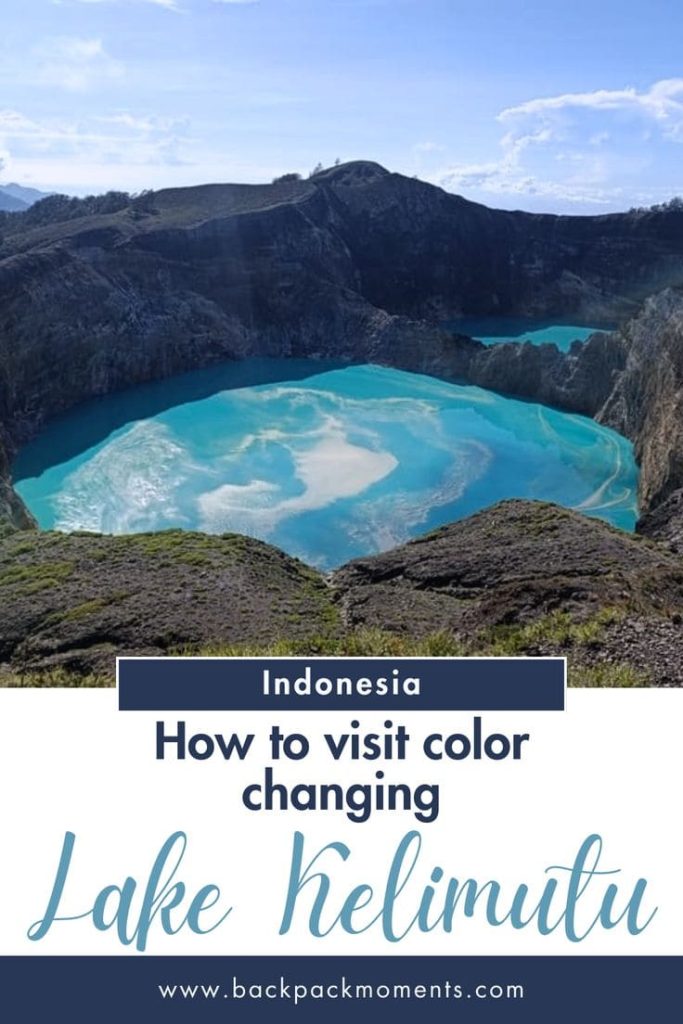How to visit the Kelimutu Lakes and are they worth it?
This post may contain affiliate links. If you make a purchase using one of these links, I may receive a small reward at no extra cost to you. See my Disclosure Policy for more information.
A dormant volcano shrouded in mystery, three lakes with unpredictable and ever-changing hues, a short trek, and the option to soak in hot pools on the way back.
This is what you get if you visit Mount Kelimutu on the island of Flores in Indonesia.
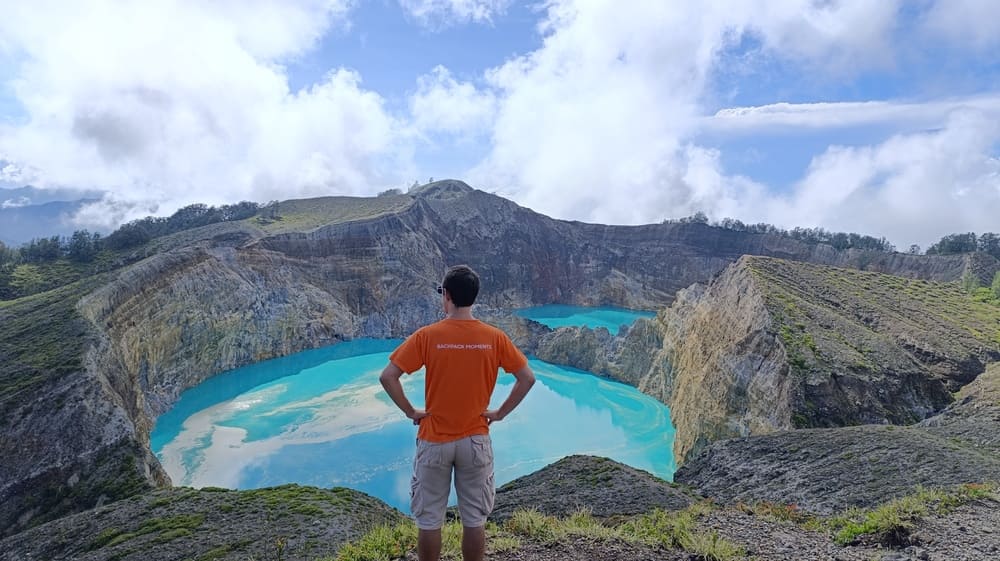
And my quick answer is: Yes, it’s worth a visit but only if you’re already in Ende or Maumere.
Now let’s take a deep dive on how to organize your trip there and what to expect.
Where is Kelimutu…
The volcano Kelimutu is located in central Flores (see my take on whether Flores is worth it at all), about 13 km from the small, tourist-oriented village of Moni.
The nearest cities are Ende (about 2-3 hours away) and Maumere (about 3-4 hours away).
…and how to get there?
Step 1: Get to Flores
First, let’s get to Flores.
Ende and Maumere both have airports but only connect to Labuan Bajo and Kupang, which means that from Bali or Java, you will need to take 2 flights to get there. Not ideal and also pricey but if you want convenience, this is the best way.
Another option is to go by sea. Indonesia has an extensive network of passenger ferries. Ende and Maumere both have ports that receive ferries from Surabaya, Lombok, and Bali, to name a few. This is how I first arrived in Ende – by a passenger ship from Surabaya.
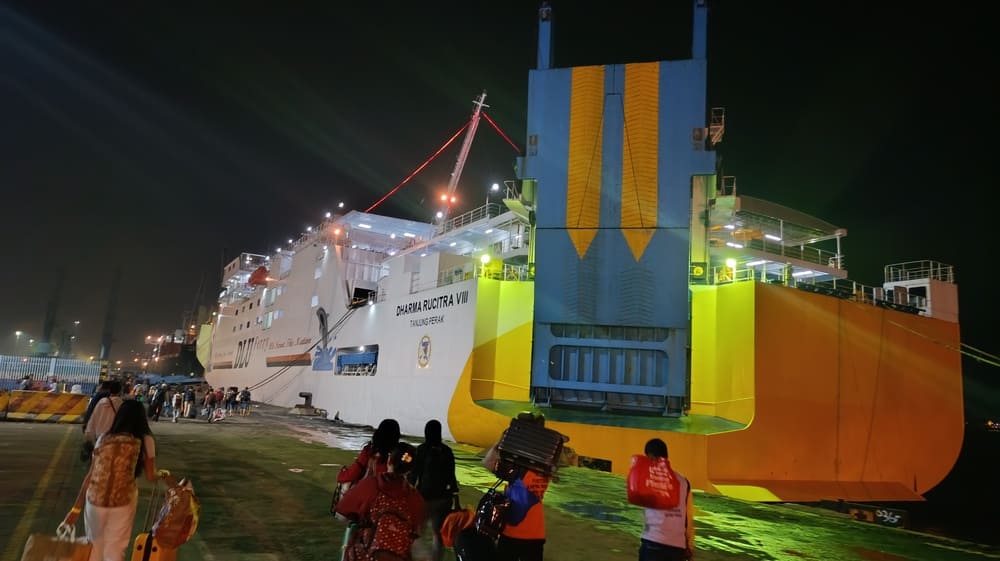
Most people arrive in Flores through Labuan Bajo. It’s the only town on the island with an international airport and regular flights from Bali and Jakarta. The Komodo National Park with its amazing sailing experience is there too, so it makes sense.
Anyhow, if you find yourself in Labuan Bajo wanting to get to Kelimutu, an overland trip to Ende takes 14+ hours on a narrow winding road. Strongly recommended that you break up the journey by stopping at Ruteng and Bajawa. Or just take a 45-minute flight.
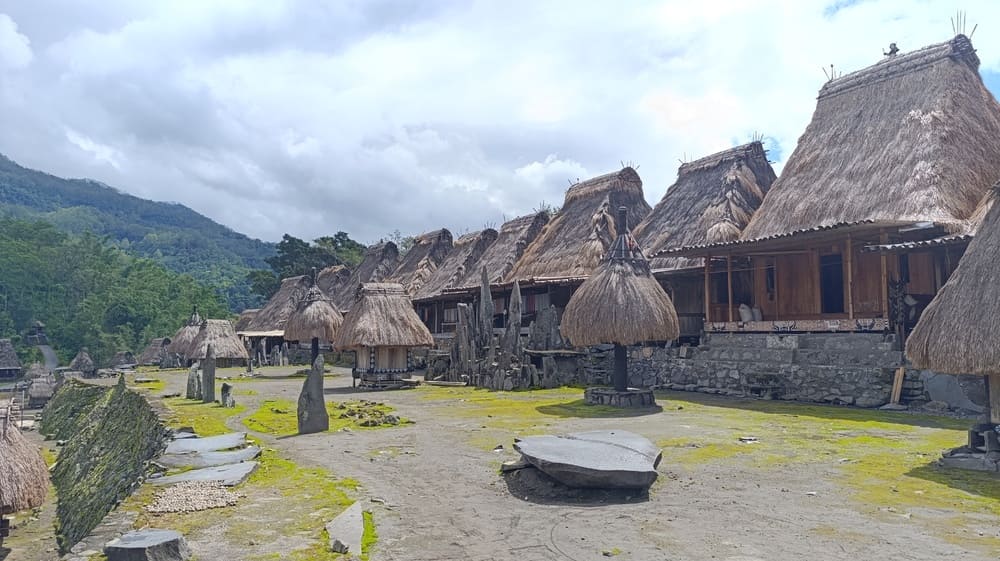
Step 2: Get to Moni
Once in Ende or Maumere, getting to Moni is pretty easy. There is public transport in the form of bemos, buses, and shared taxis (called “travel”) from both cities. Ende to Moni takes about 2.5 hours and costs 20k to 40k IDR (~1.3 to 2.5 USD).
What I did (and recommend) was hire a motorcycle from Ende and drive independently. This allows you to stop at interesting places along the way and is unarguably a lot more enjoyable given the curvy nature of the roads.
Step 3: Get to Kelimutu
When you arrive in Moni, you can either proceed with your motorcycle (best option!) uphill for about 13 kilometers or get someone to drive you there (either on the back of a motorcycle or, more expensively though, by car).
For the latter, ask your guesthouse in Moni. I stayed in Lucky Guesthouse which can help with transport. Expect to pay around 100.000 IDR (~6 USD) for a return trip to Kelimutu by a motorcycle taxi (an ojek).
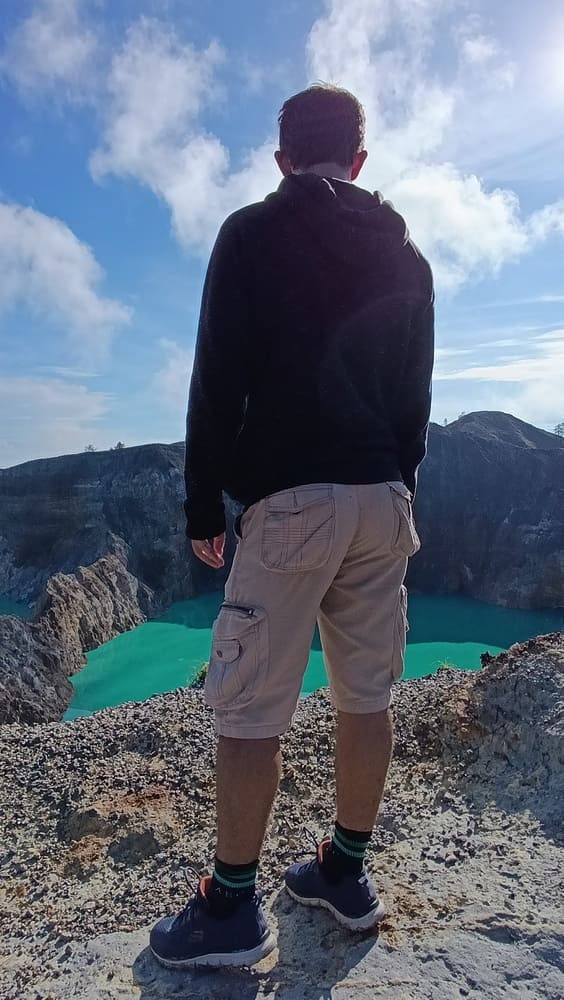
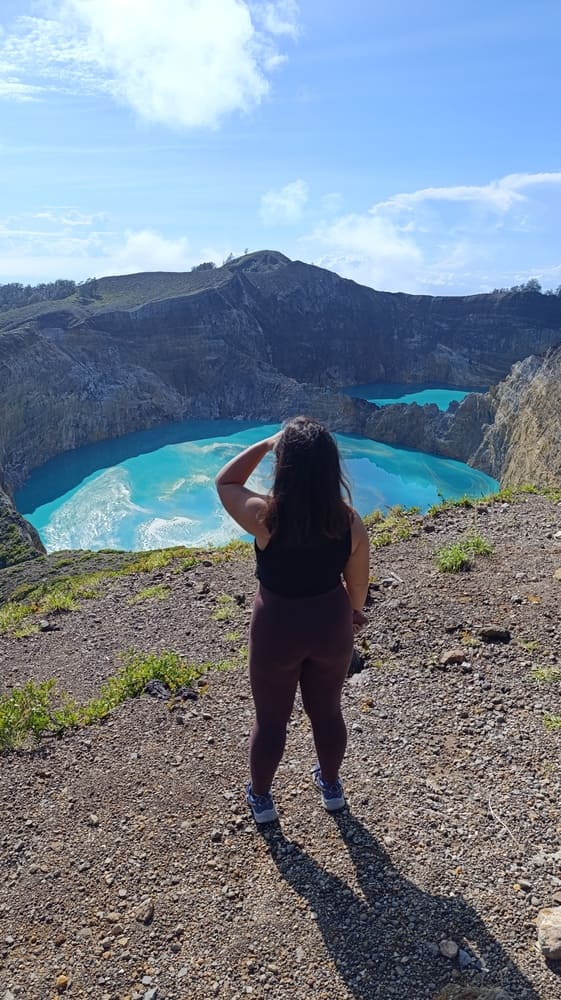
Practical Information about Kelimutu
- Opening times: 5 AM until 5 PM.
- Price: 10k IDR for locals and 150.000 IDR (~9 USD) for foreigners.
- Hiking after entrance: 1.4 km which takes around 25 minutes on stairs and paved alleys.
- Can you eat there?: Certainly. You can bring a snack along but if there are also vendors ready to make you hot noodles or sell a treat.
- How much time do you need?: Travel time from Moni is around 30 minutes, walking, admiring, and picture-taking will take even the most avid photographers no more than 90 minutes, and the way back is another 20-30 minutes. In total, prepare 2 hours from Moni or 7-8 hours return trip from Ende.
- Do you need a guide?: No, not at all. Chances are, someone will approach to offer guidance and it’s up to you to accept or politely decline but they are unlikely to tell you anything about the mythology behind Kelimutu that you can’t find online.

When to visit Kelimutu?
If you’re wondering about which month to go – whichever you’re there. You can visit it at any time, although the chance of rain increases during the rainy season between November and March.
More important is the question should you go to Kelimutu for sunrise?
Many do but let me present the five arguments against it:
- It’s often foggy in the morning in which case you won’t see anything.
- Riding up in the dark and cold is not fun at all.
- The sunlight doesn’t hit the lakes in the prettiest way until later in the morning.
- Waking up at 4 AM sucks.
- Most people go for sunrise and thus it’s the most crowded at that time.
Yeah, don’t bother. Just go at 8-9 AM and enjoy the Kelimutu Lakes in all their glory and without that many people.
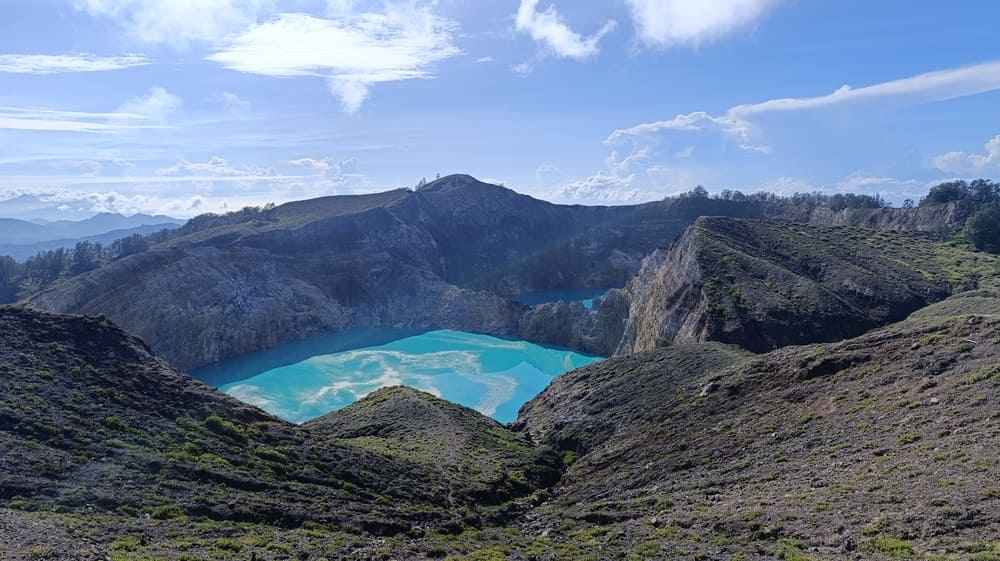
Why are the Kelimutu Lakes so unique?
The volcanic crater lakes in Kelimutu change colors all the time!
Light blue, grassy green, turquoise, black, muddy brown, milky blue, even red!
Scientifically, it’s not so difficult to explain: different chemicals and minerals mix with different bacteria and other microorganisms to reflect different wavelengths (i.e. colors).
But explanation doesn’t take away from the uniqueness of the place. Although you will not see them changing in a matter of hours while there, there have been years when the colors changed multiple times! Satellite pictures by NASA captured it. The smartypants there also had the same idea of calling them “Volcanic mood rings” which brings me back to my middle-school period.
But local beliefs rarely care about science. Instead, folklore and legends passed over the generations have given Kelimutu a mythical status. This is quite typical of the Indonesian Archipelago – Mount Merapi and Mount Bromo in Java, Mount Agung in Bali, and Mount Rinjani in Lombok (and the list goes on) all have mythical properties and legends describing their creation and significance.
For Kelimutu, locals believe the lakes are where ancestors’ spirits rest. The changing colors? Restless spirits, plain and simple.
The three lakes’ names reflect that:
- Tiwu Ata Bupu: The Lake of Old People – the resting place of the spirits of those who lived a long life. (This is the darker isolated and colder lake)
- Tiwu Koo Fai Nuwa Muri: The Lake of Young Men and Maidens – those who died young would go to this one.
- Tiwu Ata Polo: The Lake of the Bewitched – Reserved for those who committed crimes or did evil deeds. The fact it’s almost hugging the lake of the youth is quite poetic, don’t you think?
August 14 is the date when each year locals gather at the top of Mount Kelimutu to feed their ancestors by leaving food, nuts, rice, and whatever else they have inside the craters. This is the annual Pati Ka Du’a Bapu Ata Mata festival.
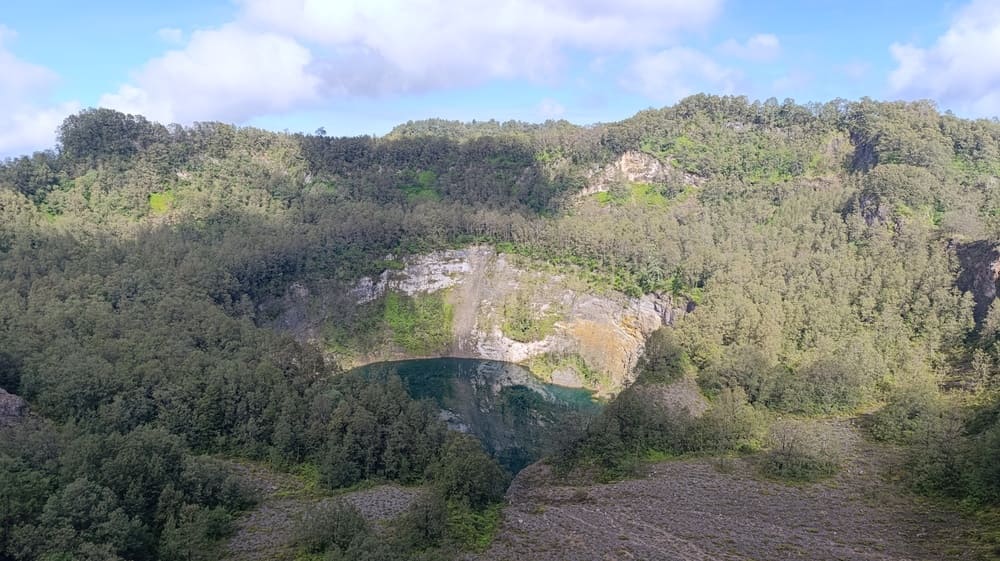
Hot Pools
Because of the volcanic activity underground, the area around Mount Kelimutu is known for its natural hot pools.
If soaking in sulphury hot water is your thing, you have two options just off the main road down Kelimutu:
- Kolorongo Hot Spring: A shallow, very natural hot pool surrounded by rice fields. Back to nature at its finest.
- Air Panas Liasembe: Two man-made pools filled with natural hot water. More comfortable in design but many locals come to take their showers here making it less than ideal for relaxation.
Both hot pools are free to enter.
So is it worth it to visit Kelimutu?
Let’s put it this way:
If you’re already backpacking through Flores, then it’s one of the best places to visit. It’s picturesque and unique and it makes for an exciting day trip.
But if you’re considering going to Flores just to visit Kelimutu, then nah. Transport is just so slow in Indonesia, traveling 2 days to see a volcano (of which there are almost 150 in Indonesia) is just not the best travel choice.
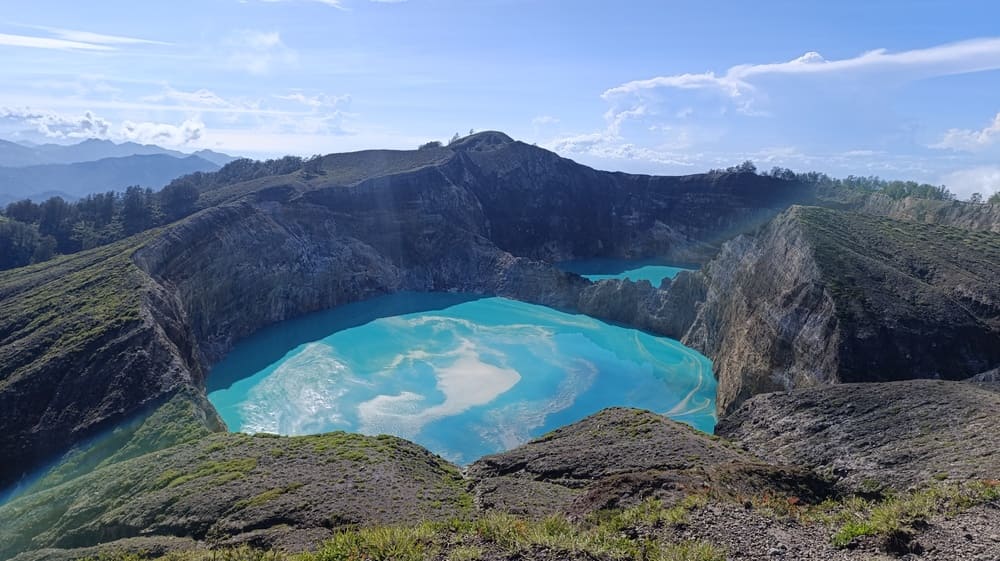
However, sometimes, the journey is more exciting than the destination. Flores has a lot to offer, so you may go for Kelimutu but stay for the pristine jungles, authentic villages, and untouched beaches. Then, in a way, it’s worth it again.
Other volcanoes in Indonesia
If you’re in Java, consider visiting these volcanoes, each unique in its own way:
